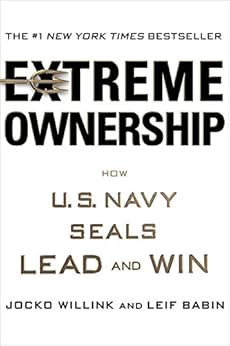Book Review: Extreme Ownership
Extreme Ownership
In this book, the notions of conventional leadership are challenged by the experiences of Navy Seal operators and their efforts in Ramadi. In particular, Jocko Willink and Leif Babin establish a dialogue to translate the lessons that they've learned on the battlefield to business.
It would serve no purpose for me to summarily describe all the different aspects of leadership showcased in this book. Instead, I wanted to focus this article on some ideas that I've grown to appreciate about the software development industry and how in a world of changing technology, requirements, personal, and market volatility some of the most potent tools at our disposal are those that we've learned from the military.
As a small example from Scrum: The Art of Doing Twice the Work in Half the Time, the author showcases how their training taught them to Observe, Orient, Decide, and Act in order to safely navigate the perils of their mission. Within the context of software development, most camps that I've spoken with or have interacted with are living this life style, whether they realize it or not. If we look at the classic scrum layout, you have these actions embedded not just in a daily stand up, but in planning sprints and isolating user stories and/or functionality necessary for a complete product. Scrum works for a large number of people because of its simplicity and regular reminders as to the immediate goals of the product being worked on.
The biggest piece missing from making the entire enterprise more agile, as an argument from the authors (one that I've grown to appreciate) is an adoption of an "Extreme Ownership" mentality on the leadership level. Businesses constantly wage a war with their competitors over market share. While they may employ scrum for churning out products or fixing existing products, where they lack agility is how they communicate with those on their own team. I don't mean team in the sense of those who immediately work with those leaders, but those whose responsibilities are intractably linked with their own teams and are not under their jurisdiction.
That is, everyone is part of the same tribe. Adopting an "us" versus "them" mentality serves only a business' competitors. What this book does a fantastic job, in my opinion, is communicating that idea, and others, that I feel are vital to not only making individual teams agile, but entire enterprises. If everyone in an organization has an ownership mentality, individuals get to spend more time working on solving problems and learning, as opposed to waiting and losing potential advantage. (This coming from a team that I work with having to wait two weeks for a data request to even be acknowledged by others in my organization.) It's the same reason why teams who work for startups initially feel such a "divine charge" in what they're doing: they own their work!
The greatest challenge in leadership that I want to see solved in my lifetime is how to instill that same feeling in a Fortune X company. When the teams are small, they can get away with acting through the lens of scrum. The "magical sauce", so to speak, that the industry is begging for is scaling these ideas. An important first step in this, that I would recommend, would be to pick up this book for yourself and exercise "Extreme Ownership" in your own work.

Comments
Post a Comment